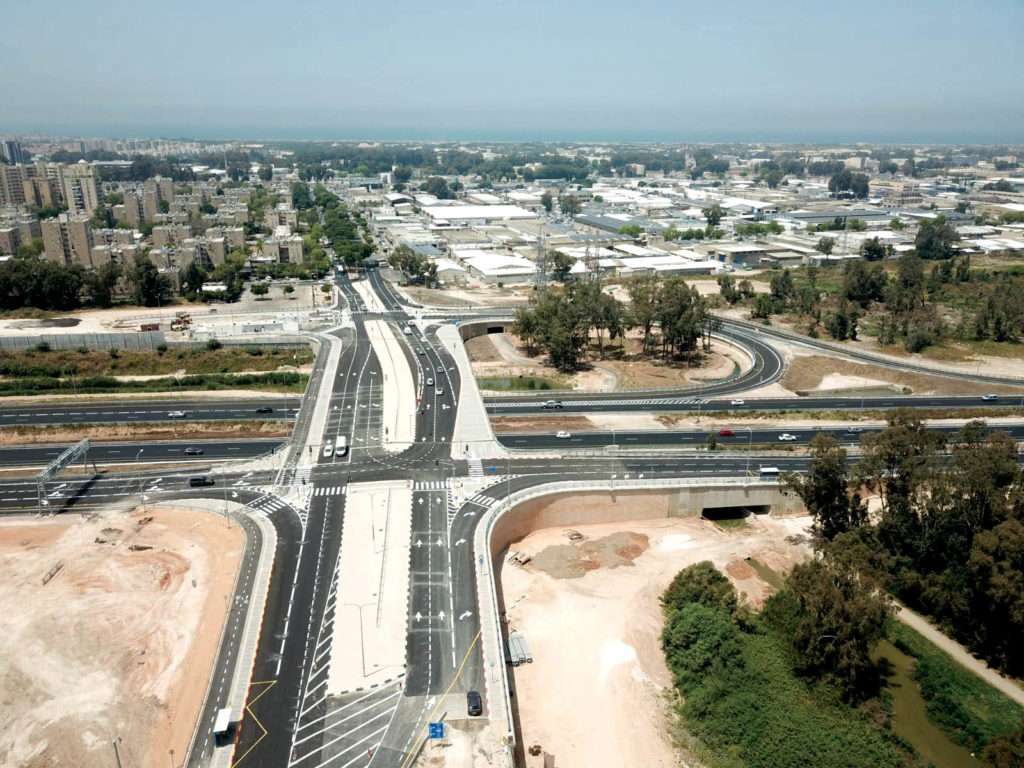
The northern part of a highway interchange project in the Middle East is adjacent to a developing industrial park; a densely populated city is located to the west of the jobsite, and a planned residential area is to the east. Before construction, the roads in this area were always congested. An interchange was needed to lighten the traffic loading from north to south on the existing highway and connect the urban areas on the east and west sides of the highway. But because the elevation of the east and west sides of the jobsite are 33 feet (10 m) higher than the existing highway, the site needed a series of 10 to 33 foot (3 to 10 m) high mechanically stabilized earth (MSE) walls to gradually lower the elevation of the road and connect it to the highway. Contractors engaged ACE Geosynthetics Inc. to provide materials for the MSE walls.
The jobsite crosses agricultural and fish farms, and, therefore, MSE walls needed to be placed on soft soil of high-plasticity clay (CH) with a thickness of 26 feet (8 m). To reduce the total settlement of the foundation soil, work crews installed prefabricated vertical drains (PVD) with a 1-foot (30-cm) sand drain layer before geogrid wrap-faced MSE wall construction. Construction crews laid down two to three layers of geotextiles at the bottom of the MSE walls to make the load evenly applied to the foundation.
The settlement of geogrid wrap-face MSE walls used for preloading and of the block-faced piling structure are different. If crews construct two structures at the same time, significant differential settlement will occur at the interface between the segmental blocks and MSE walls and, subsequently, rupture the geogrid. Therefore, engineers designed MSE walls using a two-stage construction method to ensure the sustainability, safety and stability of the overall structure. When constructing the first stage of the geogrid wrap-face MSE walls, crews embedded an extra layer of geogrid with strength of 147,512 pounds-feet (200 kN/m), as well as 2.3 to 3.0 foot (0.7 to 0.9 m) long geogrid reserved outside the MSE wall face. Once crews completed the preloading and achieved the expected total settlement, they connected the geogrids reversed outside the walls with second-stage segmental blocks to complete construction.
For more information or to enter projects in the 2022 International Achievement Awards, visit https://iaa.ifai.com.
SIDEBAR: Project highlights
Geosynthetics for a highway interchange project in the Middle East
GEOGRIDS
ACEGrid GG150 geogrids
ACEGrid GG200-I geogrids
GEOGRIDS MANUFACTURER
ACE Geosynthetics Inc.
GEOTEXTILE
ACETex GT600-I geotextile
GEOTEXTILE MANUFACTURER
ACE Geosynthetics Inc.
 TEXTILES.ORG
TEXTILES.ORG


